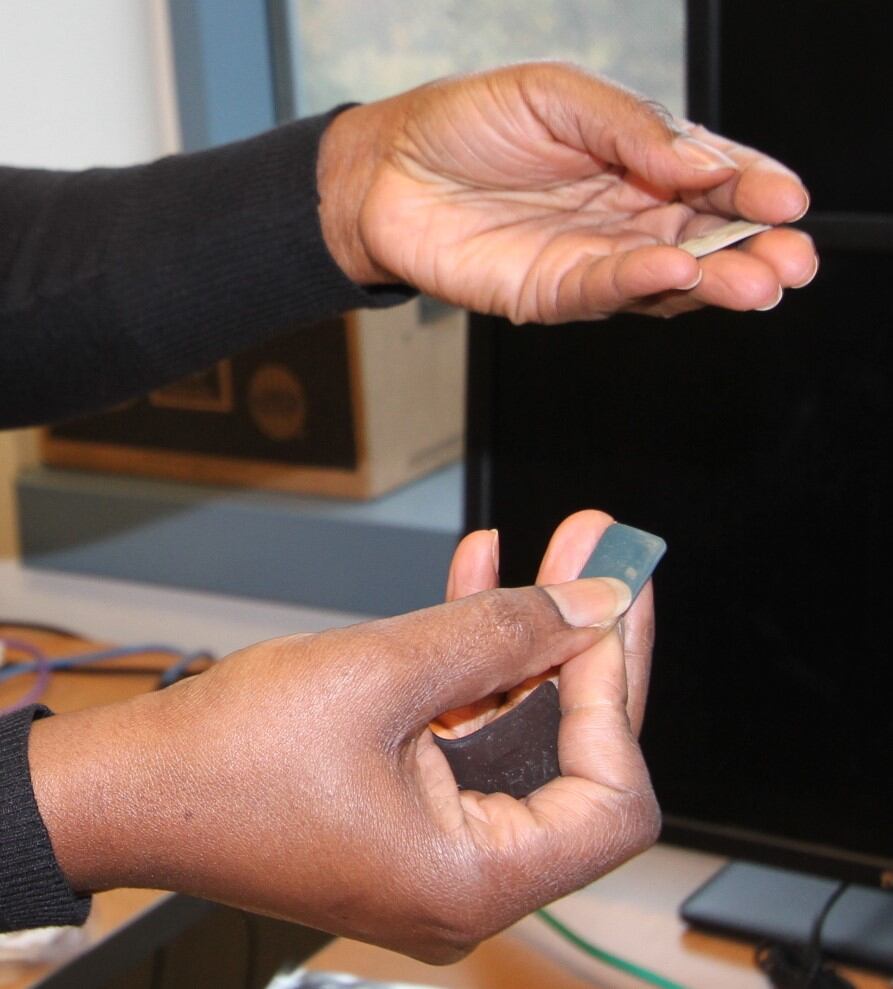The way civilians can wave their smartwatch at a Starbucks to pay for a latte is how the Army thinks wearable tech might soon be used to access secure networks in tactical field environments.
It’s like a wearable Common Access Card, but with more features.
The wearable identity authentication and authorization technologies being built at Aberdeen Proving Ground, Maryland are expected to allow soldiers to use secure networks while on the move and in contested, threat-based environments, according to an Army release.
The tech that the Army’s Combat Capabilities Development Command is working on will give soldiers access to all of the crucial data needed to conduct high-tech, high-end warfare that top Pentagon officials expect to be at the center of a potential near-peer fight.
CCDC’s Command, Control, Communications, Computers, Cyber, Intelligence and Reconnaissance Center is designing the “wearable identity tokens,” according to the release.
The devices are wireless, lightweight, flexible and rugged and can fit inside a soldier’s pocket, attached to a sleeve or placed in a wristband to wear like a smartwatch.
The soldier would just get near the system that they need to use and the system would automatically recognize them by the token and prompt the soldier to enter a personal identification number or even use another biometric, such as a fingerprint or eye scan, as second authentication.
Once the soldier walks away, they’re automatically logged out of the system.
This is once piece of the larger project that the Army is pursuing — a simpler, intuitive tactical network, according to the release.
Access to that network and associated work are aimed at helping modernize the Army’s networks and inform decision makers on the challenges developers face while building the new systems, said Brian Dempsey, Tactical Network Protection chief for the C5ISR Center’s Space and Terrestrial Communications Directorate.
Features of the new devices might seem familiar, if a soldier thinks about different systems, said Ogedi Okwudishu, project lead for the Tactical Identity and Access Management program.
That’s because they combine the existing CAC card, which has been in use since 2001, with advances in commercial wireless payment. Think Apple Pay at Starbucks.
“We want to be able to research, test, proof the concepts and integrate emerging IT capabilities from industry as they become available. There's no point re-inventing the wheel,” Okwudishu said.

The tokens also allow for tactical platforms to avoid expensive retrofitting to read new ID technologies, Okwudishu said.
And beyond ease of use, developers see potential to expand the device with future software upgrades.
“Soldiers should not have to take out a smartcard, insert it into a card reader and then remember to remove the card from the reader when they are done,” said Okwudishu. “Contactless identity tokens are not only easy to use, they provide a significant cost savings for the Army. You can continue to add authentication capabilities without needing to redesign, or deploy new, tactical hardware to every laptop, server, handheld device or weapon system in the field.”
The TIDAM program began in 2017 and developers are also using the device to work alongside research on the Integrated Visual Augmentation System, or IVAS, that will transition wearable technologies to Program Executive Office-Soldier. One step closer to getting the tech into formations.
As that effort moves forward, the TIDAM researchers are developing software for the wearable tech that can be used at the brigade and below level.
“Nobody has done anything like this yet. If done properly, it will make the authentication process a lot easier and a lot faster,” said Sgt. 1st Class David Worthington, senior enlisted adviser for the C5ISR Center. “More important, it provides more reciprocity at the tactical level for log-ins, so you can track what people are doing on the network."
Todd South has written about crime, courts, government and the military for multiple publications since 2004 and was named a 2014 Pulitzer finalist for a co-written project on witness intimidation. Todd is a Marine veteran of the Iraq War.





